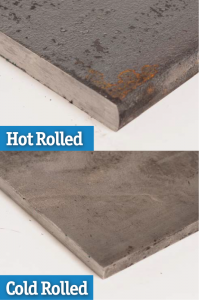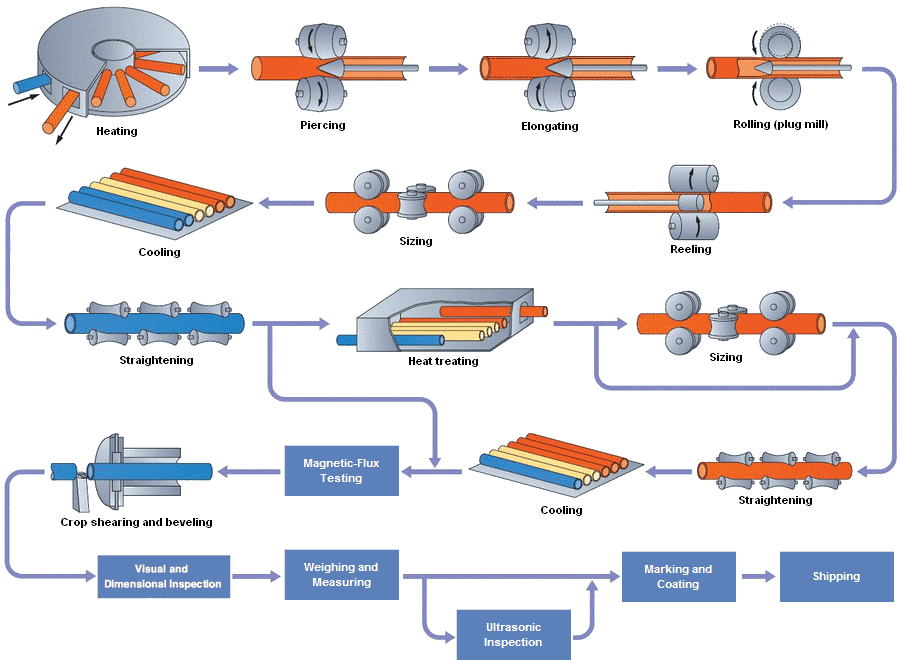“Hot Roll” is the nickname for steel that has been produced in the “hot rolling” method, processed at temperatures above the recrystallization temperature of the material. Hot Roll is well-priced and popular for applications where finished surface quality is not critical. Our hot roll steel material selection covers the most popular alloys, shapes and finishes, including galvanized, for added corrosion resistance. Hot roll can be cut-to-size and also comes in variety sample packs. Customers often ask us about the differences between hot rolled steel and cold rolled steel. There are some fundamental differences between these two types of metal. These differences relate to the ways these metals are processed at the mill, and not the product specification or grade.
Hot Rolled Steel Pipes mill process :
Hot Rolled Hot rolling is a mill process which involves rolling the steel at a high temperature (typically at a temperature over 1700° F), which is above the steel’s recrystallization temperature. When steel is above the recrystallization temperature, it can be shaped and formed easily, and the steel can be made in much larger sizes. Hot rolled steel is typically cheaper than cold rolled steel due to the fact that it is often manufactured without any delays in the process, and therefore the reheating of the steel is not required (as it is with cold rolled). When the steel cools off it will shrink slightly thus giving less control on the size and shape of the finished product when compared to cold rolled. Uses: Hot rolled products like hot rolled steel bars are used in the welding and construction trades to make railroad tracks and I-beams, for example. Hot rolled steel is used in situations where precise shapes and tolerances are not required.
Production Process Round tube blank → heating → piercing → three roller skew rolling, continuous rolling, or extruding → semi-finished tube → sizing or size reduction → cooling → straightening → water pressure test or flaw detection → marking → warehousing.










